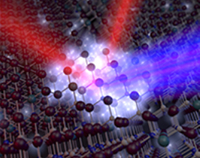What is the relationship between plasmonic and nanoelectronic nanostructures? (Reopening of more topics) PhD in Nano-Microelectronics
Researcher and author: Dr. ( Afshin Rashid)
Note: Advances in nanoscale self-assembly techniques have made it possible to design and fabricate nanostructured surfaces with specific optical properties. Materials of this type are of great interest to the biotechnology and optoelectronics industries.
Nanoplasmonic devices are engineered by placing nanoscale nanoplastic materials in a regular array on a flat surface. These self-assembled spheres act as a template for the growth of gold and other materials. Once the nanoplastic material is gone, the structure is the result of an array of nanopores - a nanoplasmonic surface - with attractive nanoscale and macroscopic interactions with light. Nanostructured metal substrates act as antennas to attach incident light to nanoparticles or small molecules, allowing them to be examined at very low concentrations. Nanoplasmonics, the unique interaction of light with nanoscale metallic materials, can achieve unparalleled sensitivity.
Conclusion :
Advances in nanoscale self-assembly techniques have made it possible to design and fabricate nanostructured surfaces with specific optical properties. Materials of this type are of great interest to the biotechnology and optoelectronics industries.
Researcher and author: Dr. ( Afshin Rashid)
PhD in Nano-Microelectronics




